Rituals
Wood, textile, lampshade backing foil
2 panels, each 50 x 50 cm
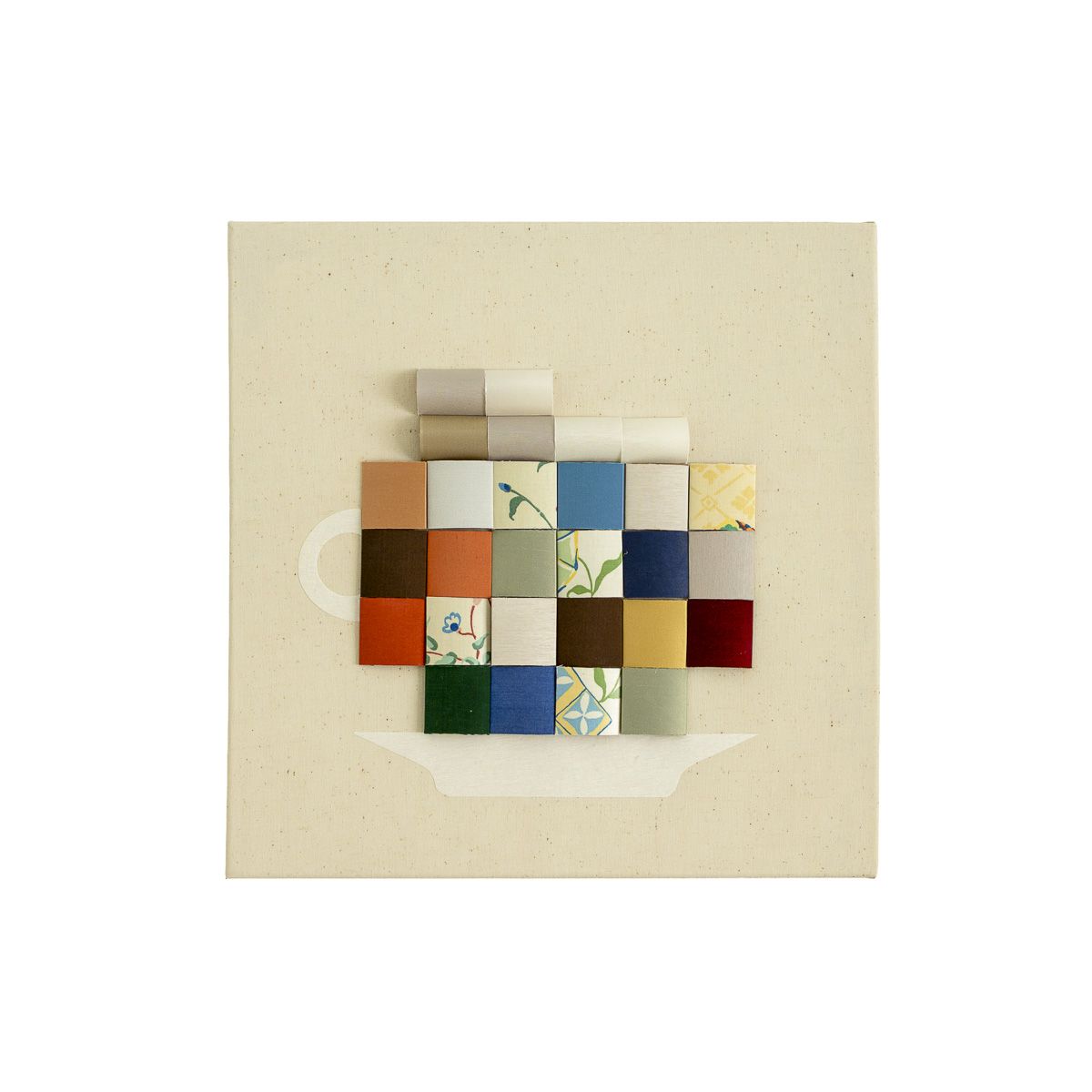
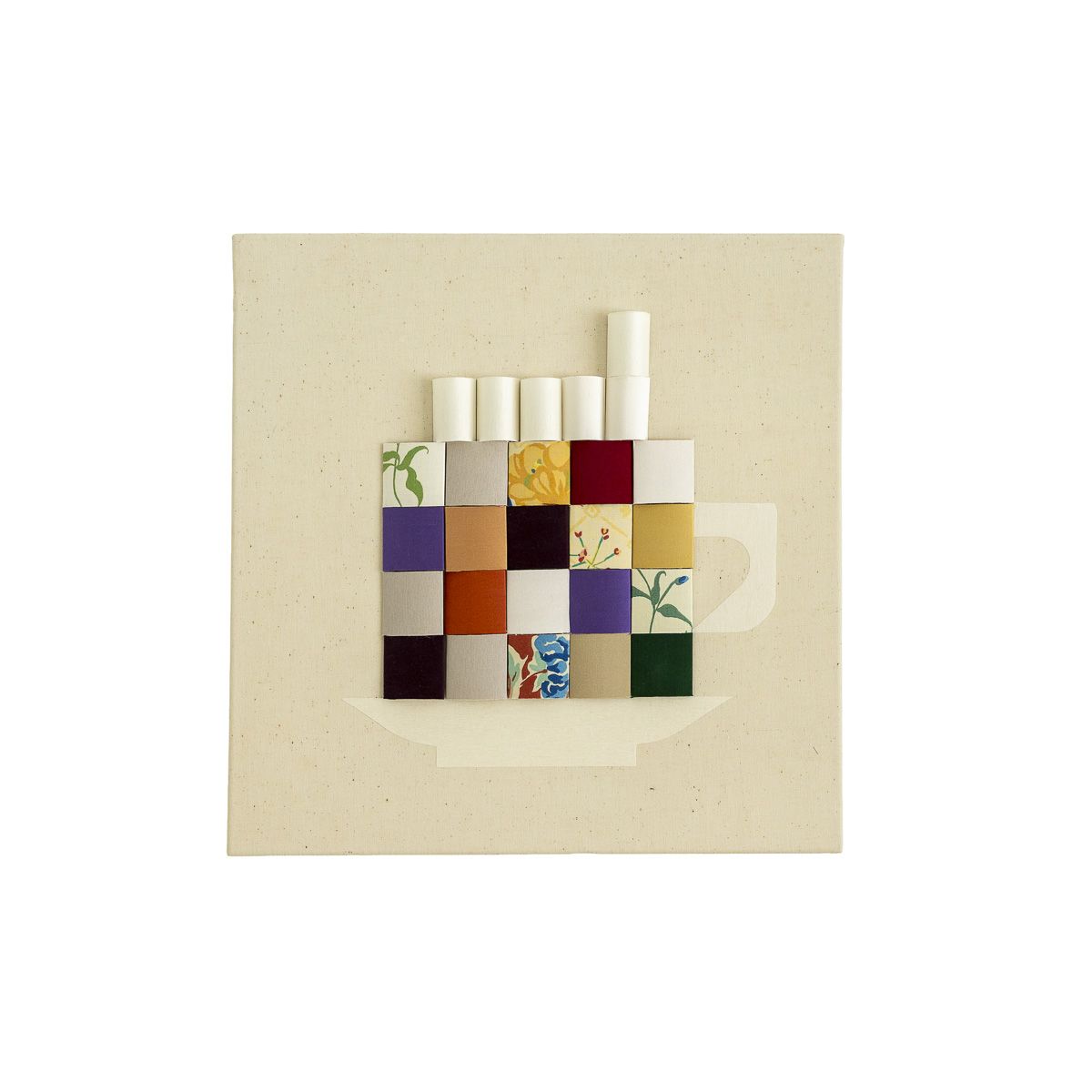
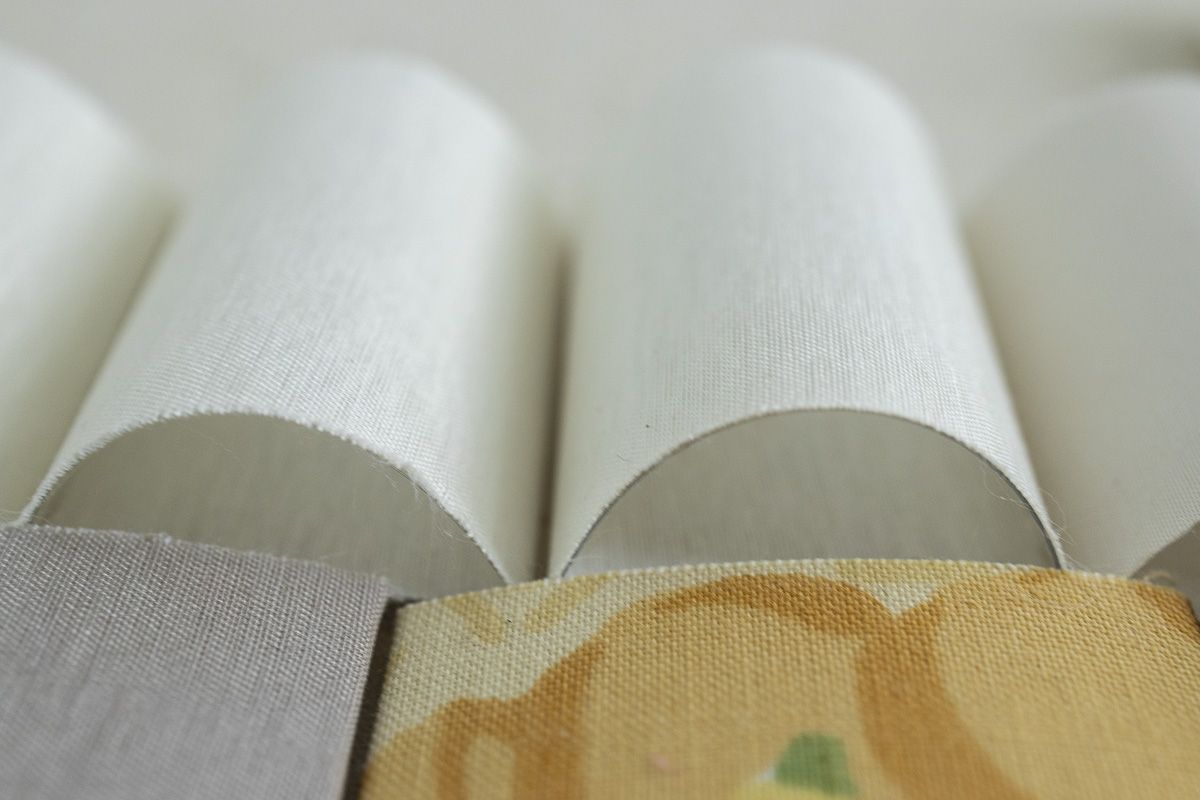
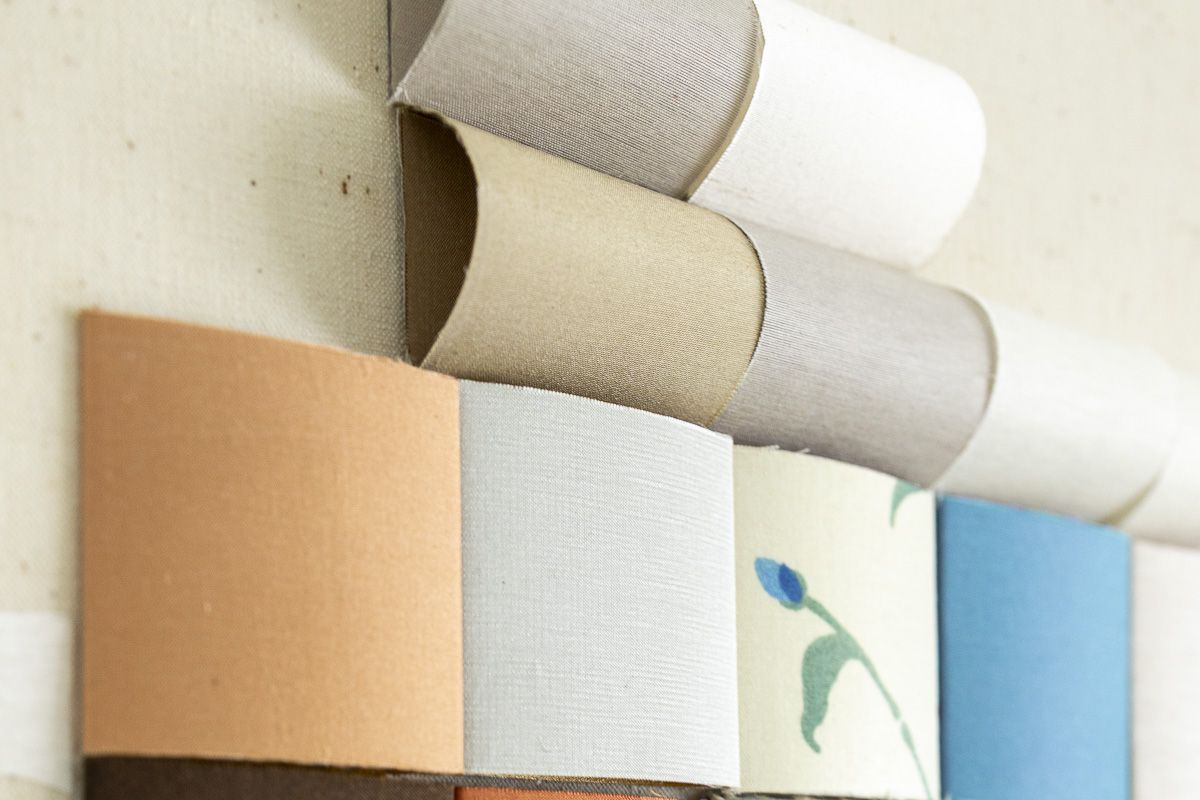
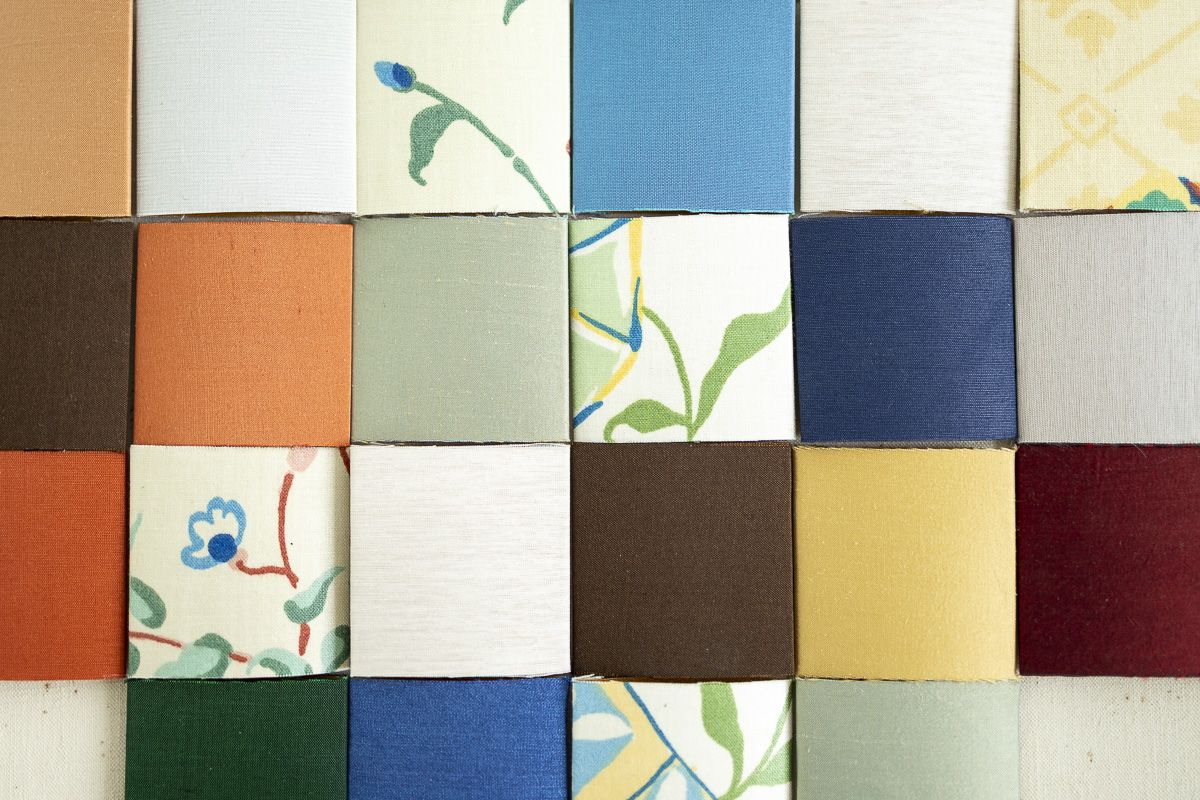
Upcycled objects:
Pieces of silk, swatches of interior fabrics, lampshade backing foil, canvas frames
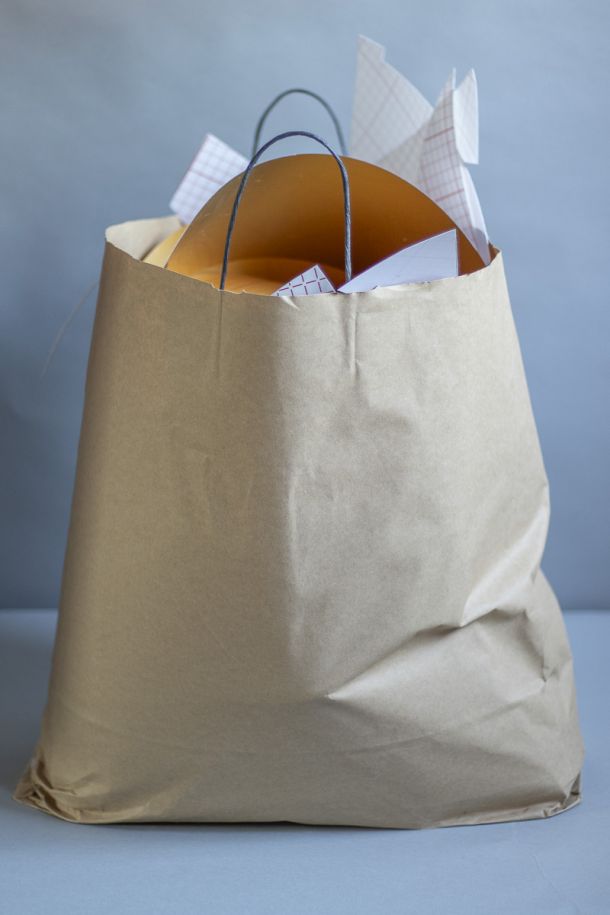
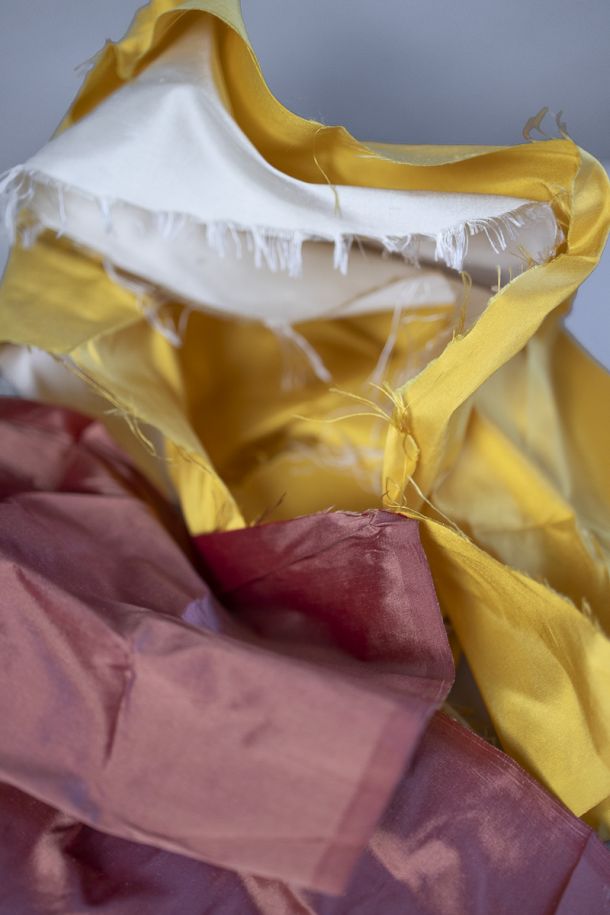
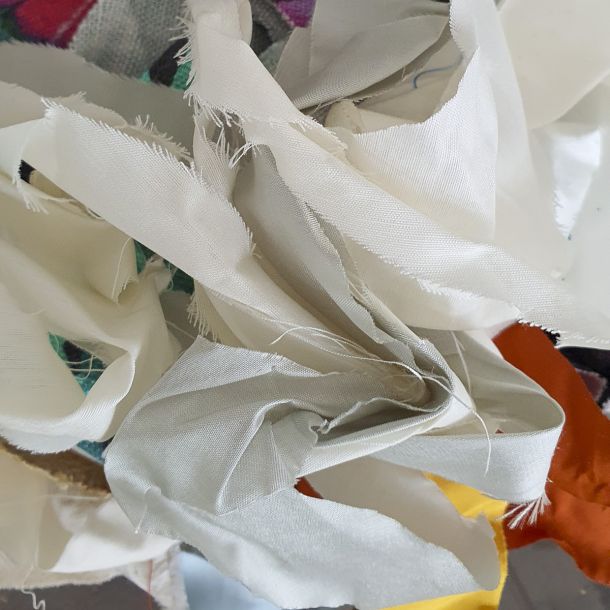


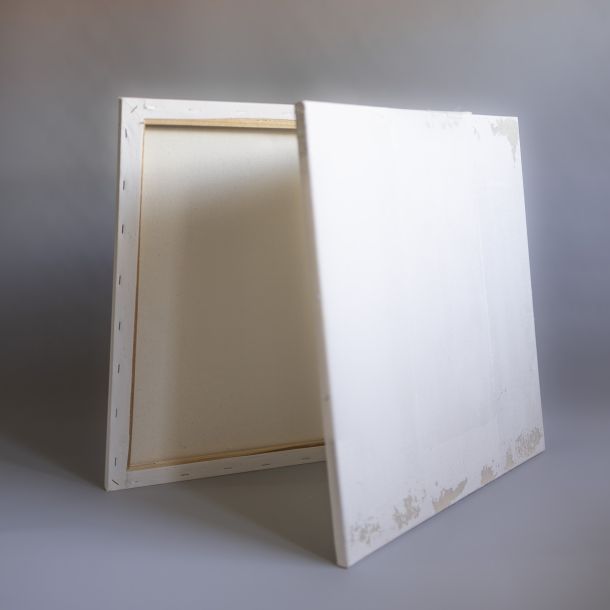
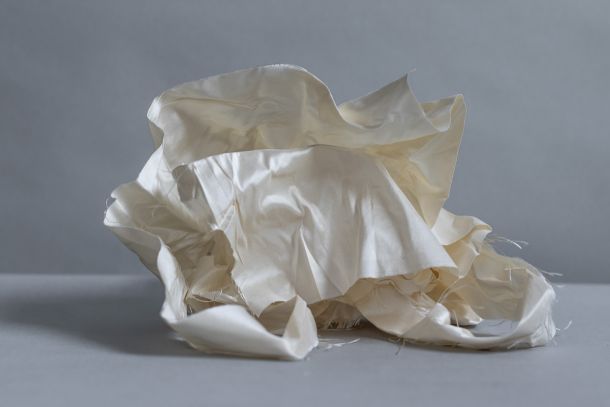

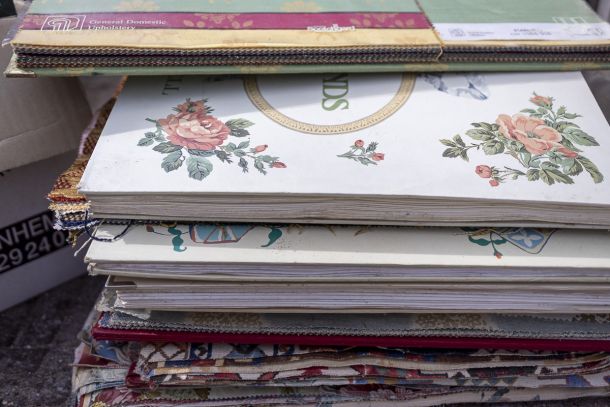
Rituals
What looks like a grid of fabric squares is, in fact, a reconstruction of a ritual that spans time and cultures. A cup, a saucer. Shapes that have no function here, only presence. They appear as silence, repetition, structure. They are the echo of something everyone knows, but few remember to see.
The work is built from silk and cotton chintz and each piece salvaged, sorted, cut and reassembled. Among the fragments are pages from old interior sample books by Monkwell: a once-renowned British textile brand that helped define domestic aesthetics in the 1980s and 90s. Their fabrics, glossy and floral, translated traditional motifs into everyday design. Carefully made. Designed to last.
Monkwell began in London as a sailcloth supplier and later rose to prominence with its detailed chintz prints as part of a larger revival of English heritage and decoration. It was a company rooted in the idea that fabric could carry meaning: taste, class, aspiration, and comfort.
These values align more closely with my work than one might think. Like my previous pieces built from Sphinx ceramics history, this one is also a reassembly of domestic industrial legacy. Material becomes memory.
Some of the fabric used in this piece comes from Italy, some from England, some from a secondhand canvas found in a French village. The backing is industrial foil used in lampshade production in a store nextdoor. The composition appears minimal, but each fragment has weight. A weight of intention, of design culture, of labor.
This work considers what remains of rituals, of decoration, of our home. We still sit together over tea or coffee though our tables look different. What did people talk about, fifty or a hundred years ago, when the cups were just as warm? What was shared? What was hidden?
Maybe nothing has changed.
Maybe everything has.
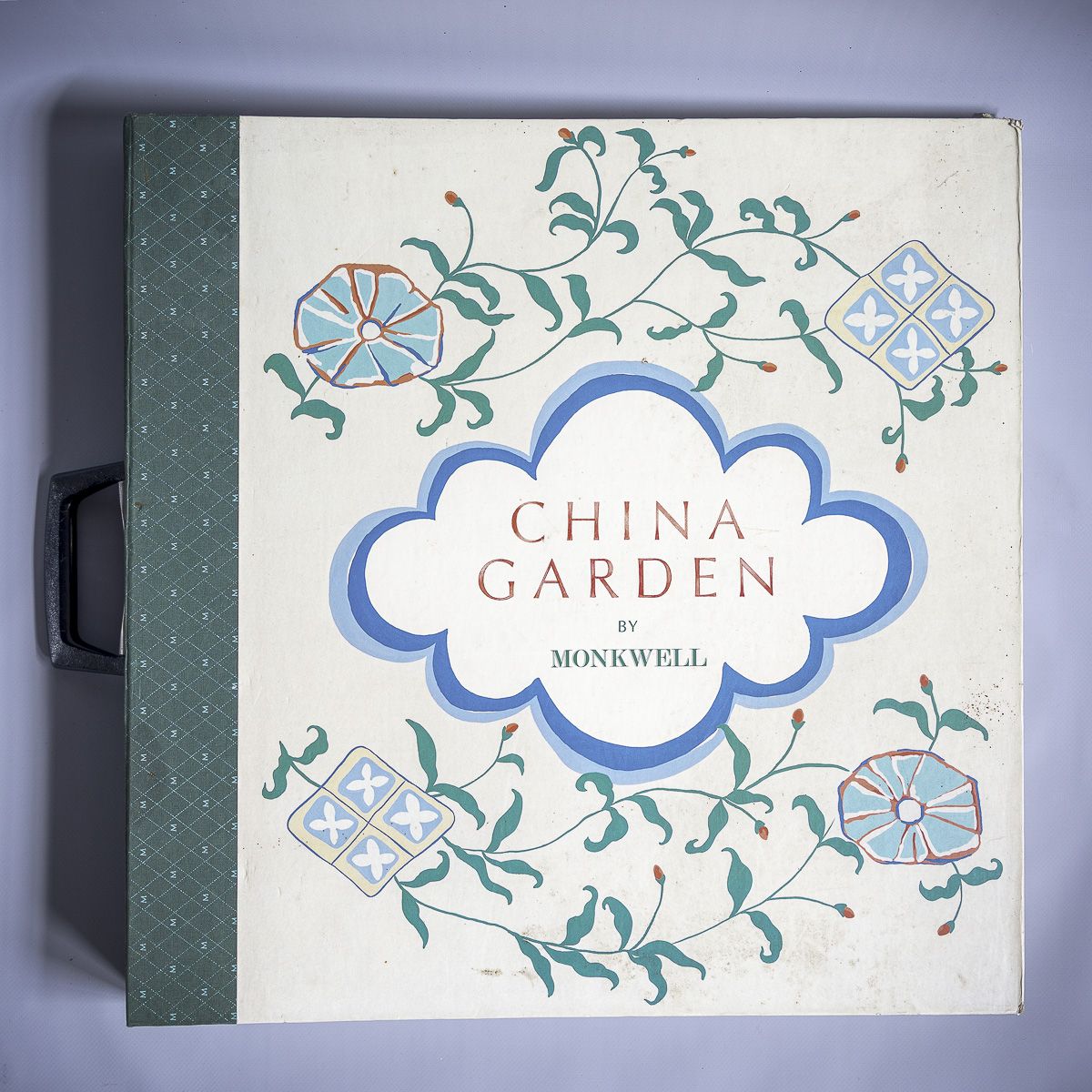
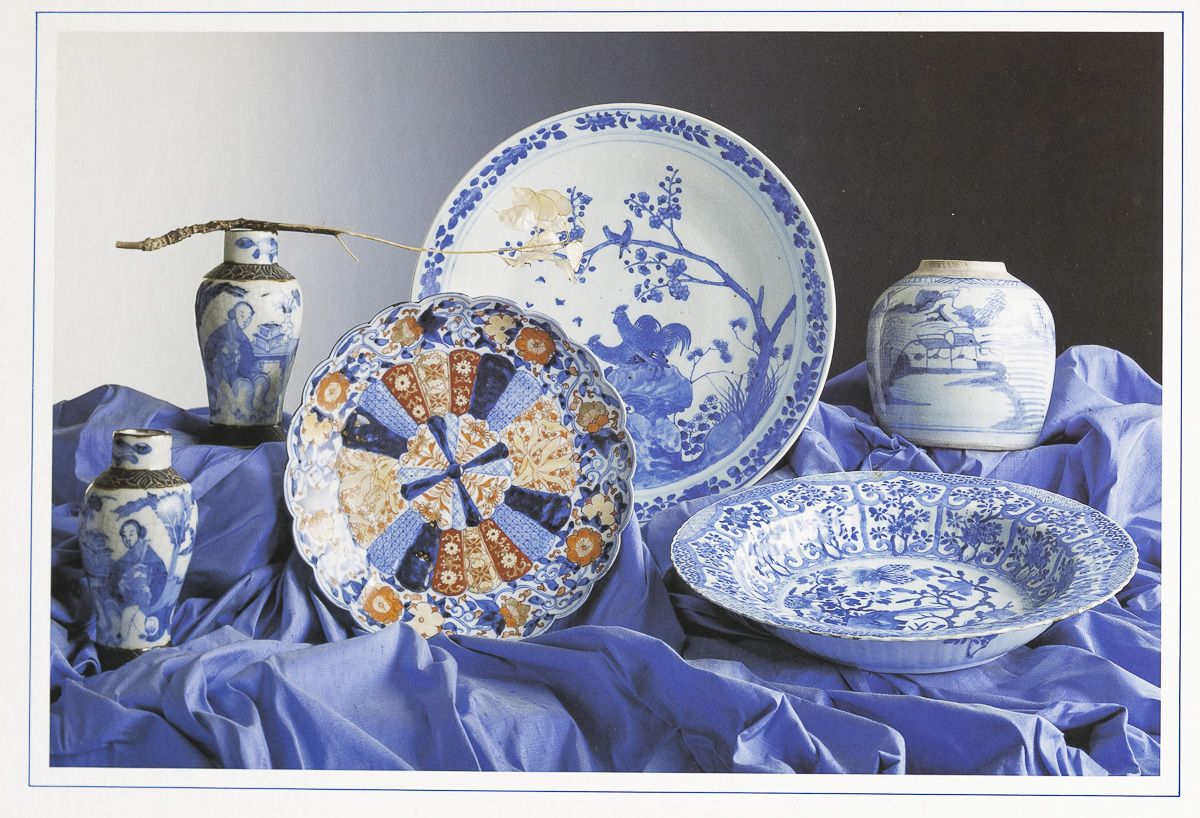
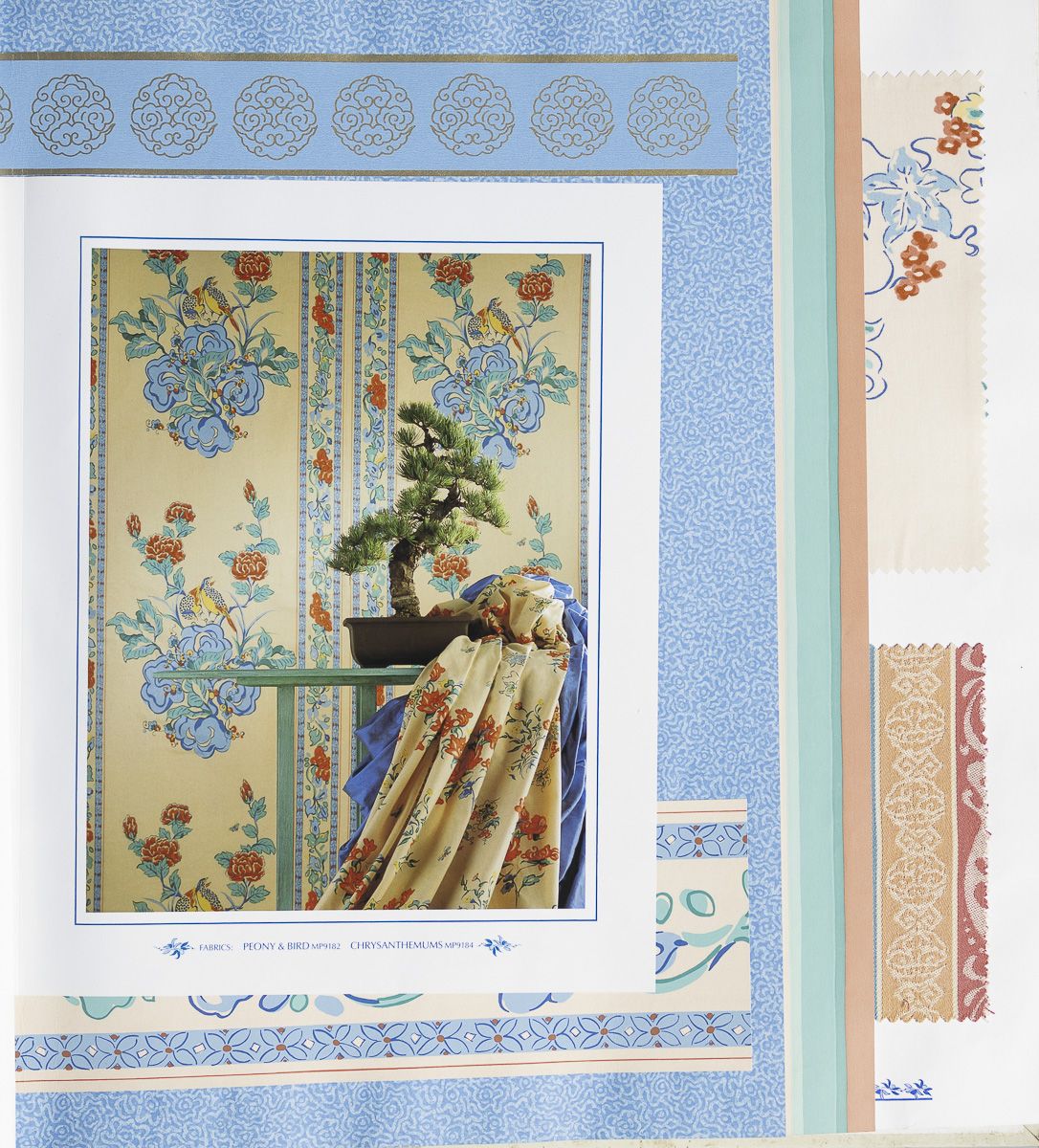


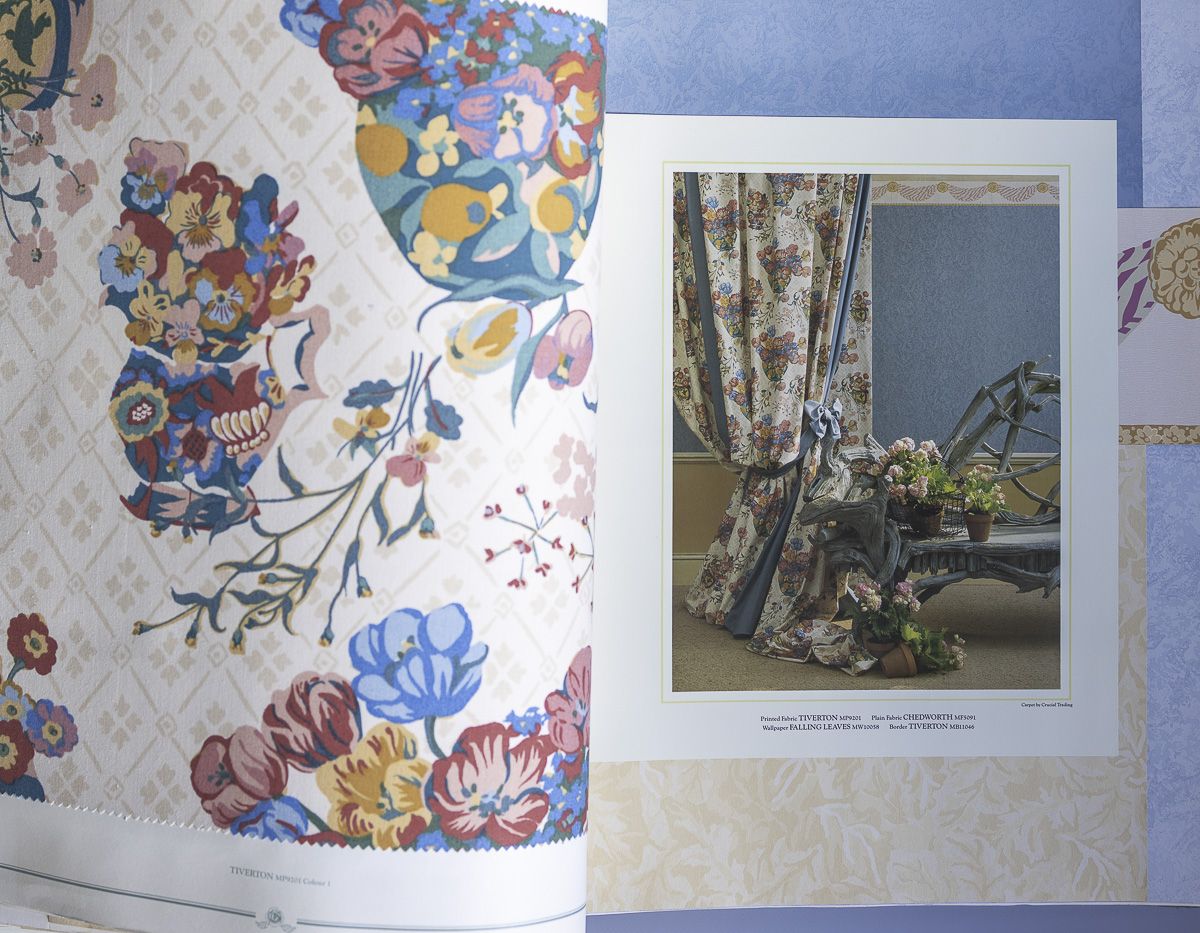
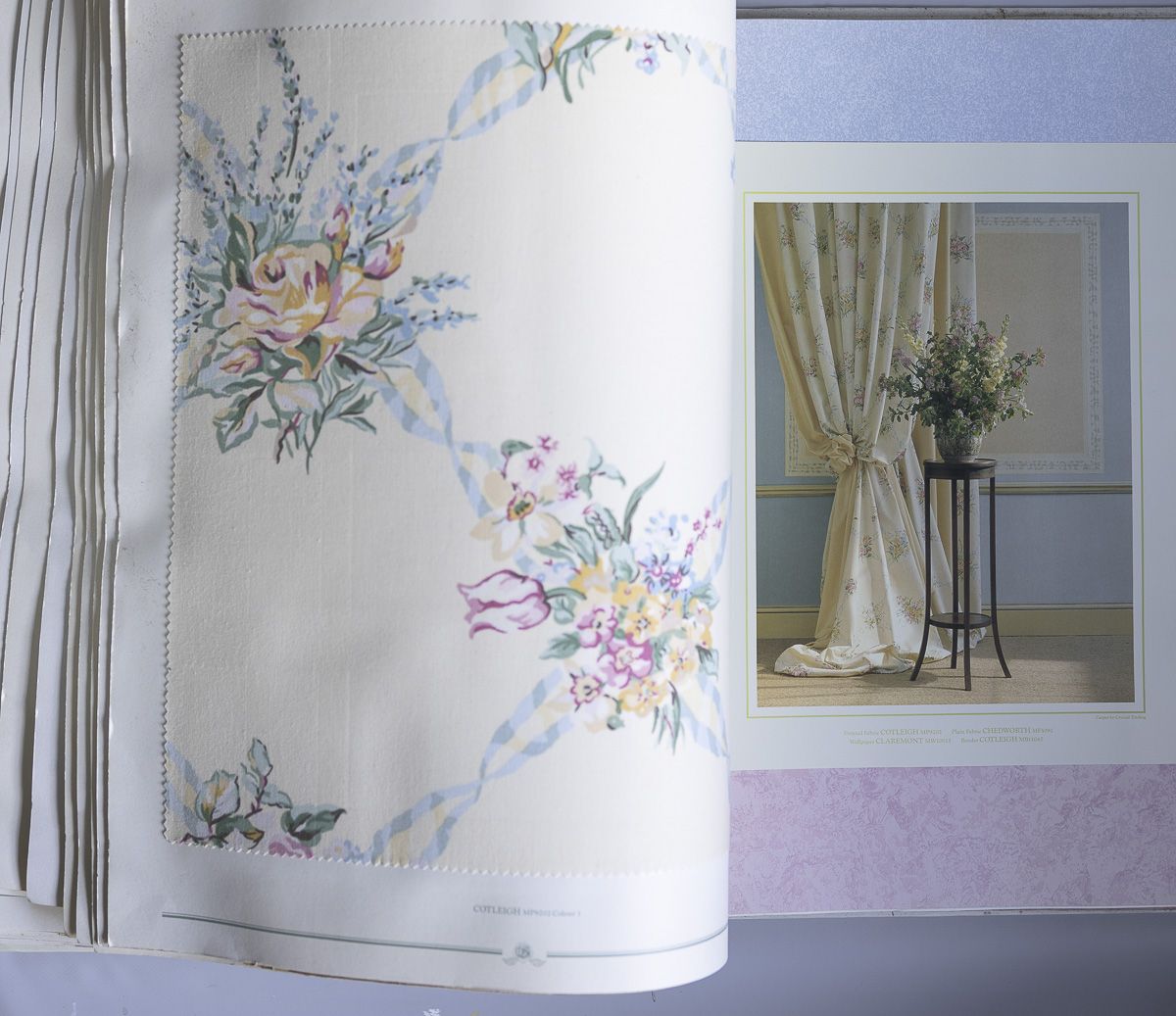
Credit photo 2 and 3: Monkwell
